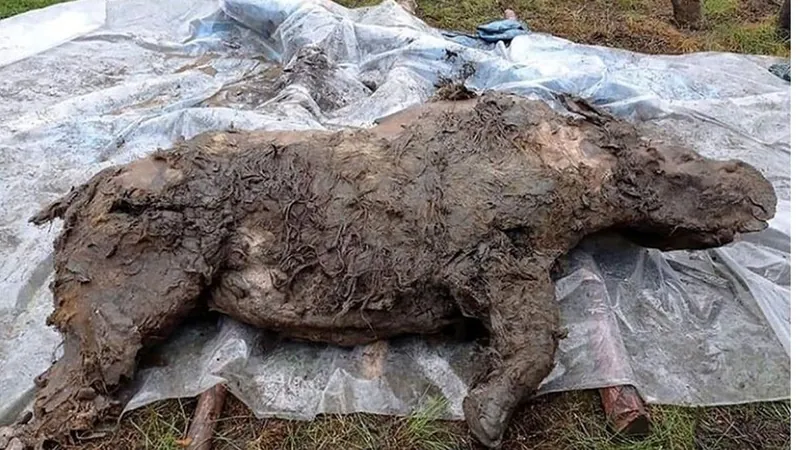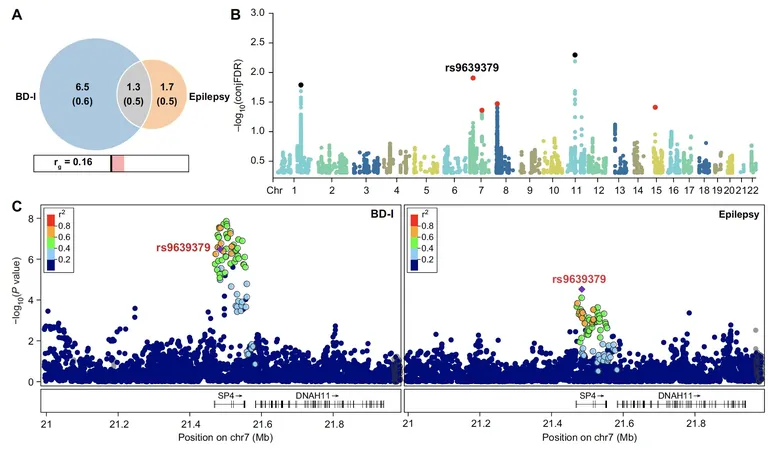
Unearthed 32,000-Year-Old Mummified Woolly Rhino: A Glimpse into the Ice Age!
2024-10-01
Unearthed 32,000-Year-Old Mummified Woolly Rhino: A Glimpse into the Ice Age!
In an extraordinary find, scientists have uncovered a remarkable mummified carcass of a young woolly rhinoceros in the icy depths of Siberia, revealing a harrowing tale of survival and predation from over 32,000 years ago. This ancient animal, which researchers have dubbed the "Abyisky rhinoceros," was discovered along the frozen banks of the Tirekhtyakh River, where it had been preserved in the permafrost.
The right side of the woolly rhino is astonishingly well preserved, showcasing patches of fur and skin that have withstood the test of time. However, the left side tells a different story, as it shows clear signs of having been violently mauled, likely by predators either shortly after its death or while it was still alive. Researchers from the Russian Academy of Sciences noted in their extensive study published in the journal Doklady Earth Sciences that the internal cavity of the animal was exposed, and many of its intestines were missing, suggesting a brutal end.
Radiocarbon dating indicates that this young woolly rhinoceros, scientifically known as Coelodonta antiquitatis, met its demise over 32,000 years ago, during a time when these massive creatures roamed the Arctic tundra as one of the largest herbivores of their era. Woolly rhinos were well adapted to the frigid temperatures, possessing a thick coat of shaggy fur, similar to their more famous neighbor, the woolly mammoth (Mammuthus primigenius). Yet, despite their size and adaptations, much remains unknown about their behavior and lifestyle, making discoveries like this one exceptionally important for scientists.
In this recent discovery, the researchers temporarily defrosted the ancient carcass to take detailed samples of its soft tissue, fur, and even teeth. They measured its horn, which was approximately 9.4 inches (24 cm) long and showed several patches indicating the animal's age, believed to be around 4 to 4.5 years at the time of death, meaning it had yet to reach sexual maturity. The research team commented on its unique fur coloration, which exhibits a combination of white, beige, and brown hues, differing from other specimens found in the region.
What truly sets the Abyisky rhinoceros apart is an unusual feature: a notable 5-inch high (13 cm) fatty hump on its back. This adaptation is believed to have evolved to help Arctic animals conserve energy and withstand harsh conditions, a characteristic not typically observed in other woolly rhino finds.
The in-depth study of this specimen not only fills gaps in the woolly rhino's storied past but may also hold the key to understanding their genetics and evolution as climate conditions changed dramatically over millennia. With ongoing advancements in technology, experts are hopeful that further analysis will provide greater insight into the lives of these magnificent creatures that once dominated the Ice Age landscape.
Stay tuned as researchers delve deeper into the secrets of the frozen past – who knows what other incredible findings await in the icy expanses of Siberia!



 Brasil (PT)
Brasil (PT)
 Canada (EN)
Canada (EN)
 Chile (ES)
Chile (ES)
 España (ES)
España (ES)
 France (FR)
France (FR)
 Hong Kong (EN)
Hong Kong (EN)
 Italia (IT)
Italia (IT)
 日本 (JA)
日本 (JA)
 Magyarország (HU)
Magyarország (HU)
 Norge (NO)
Norge (NO)
 Polska (PL)
Polska (PL)
 Schweiz (DE)
Schweiz (DE)
 Singapore (EN)
Singapore (EN)
 Sverige (SV)
Sverige (SV)
 Suomi (FI)
Suomi (FI)
 Türkiye (TR)
Türkiye (TR)